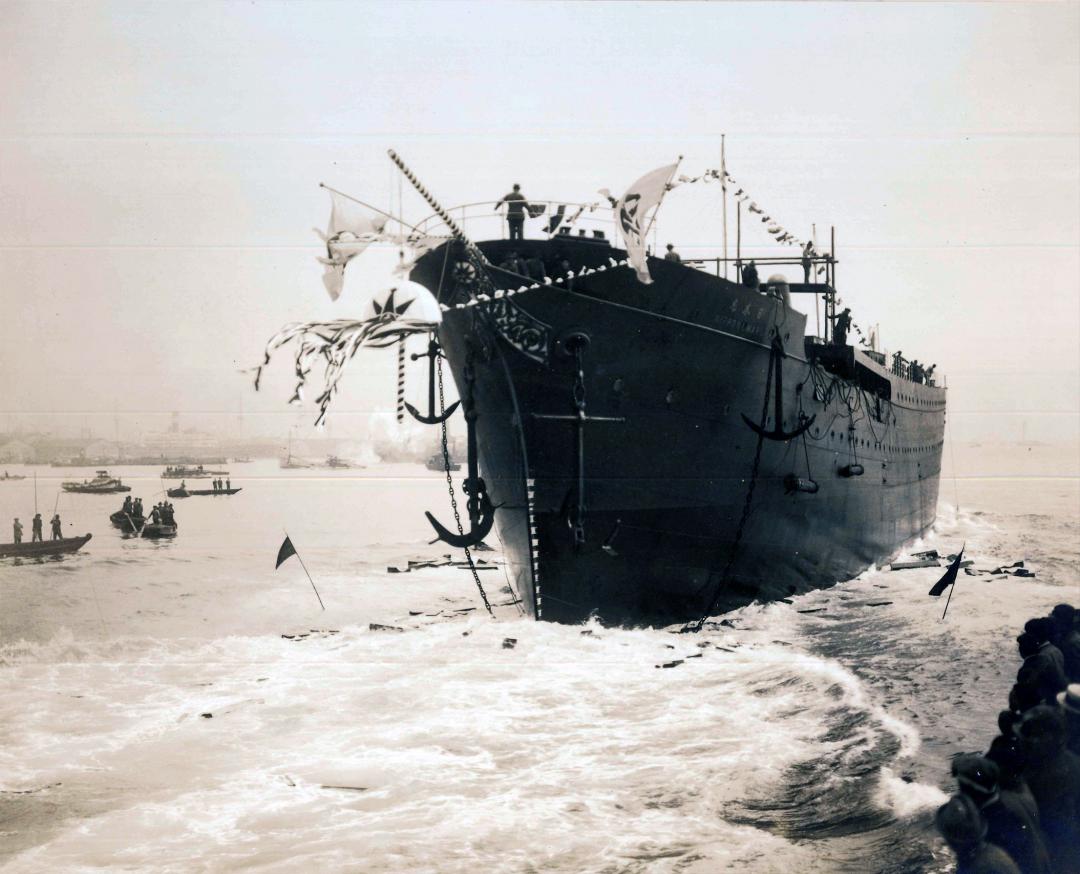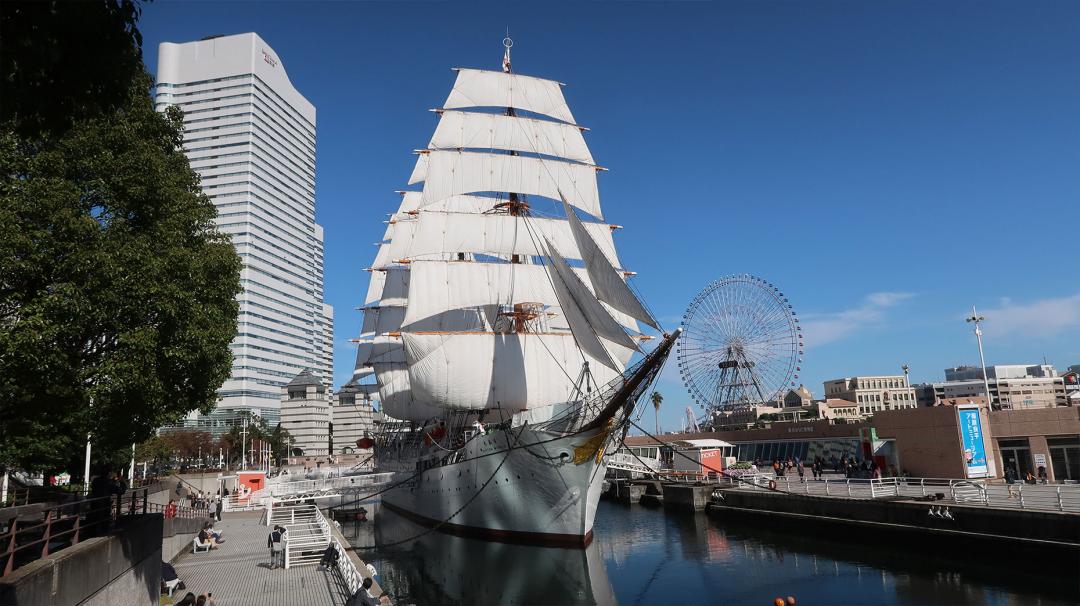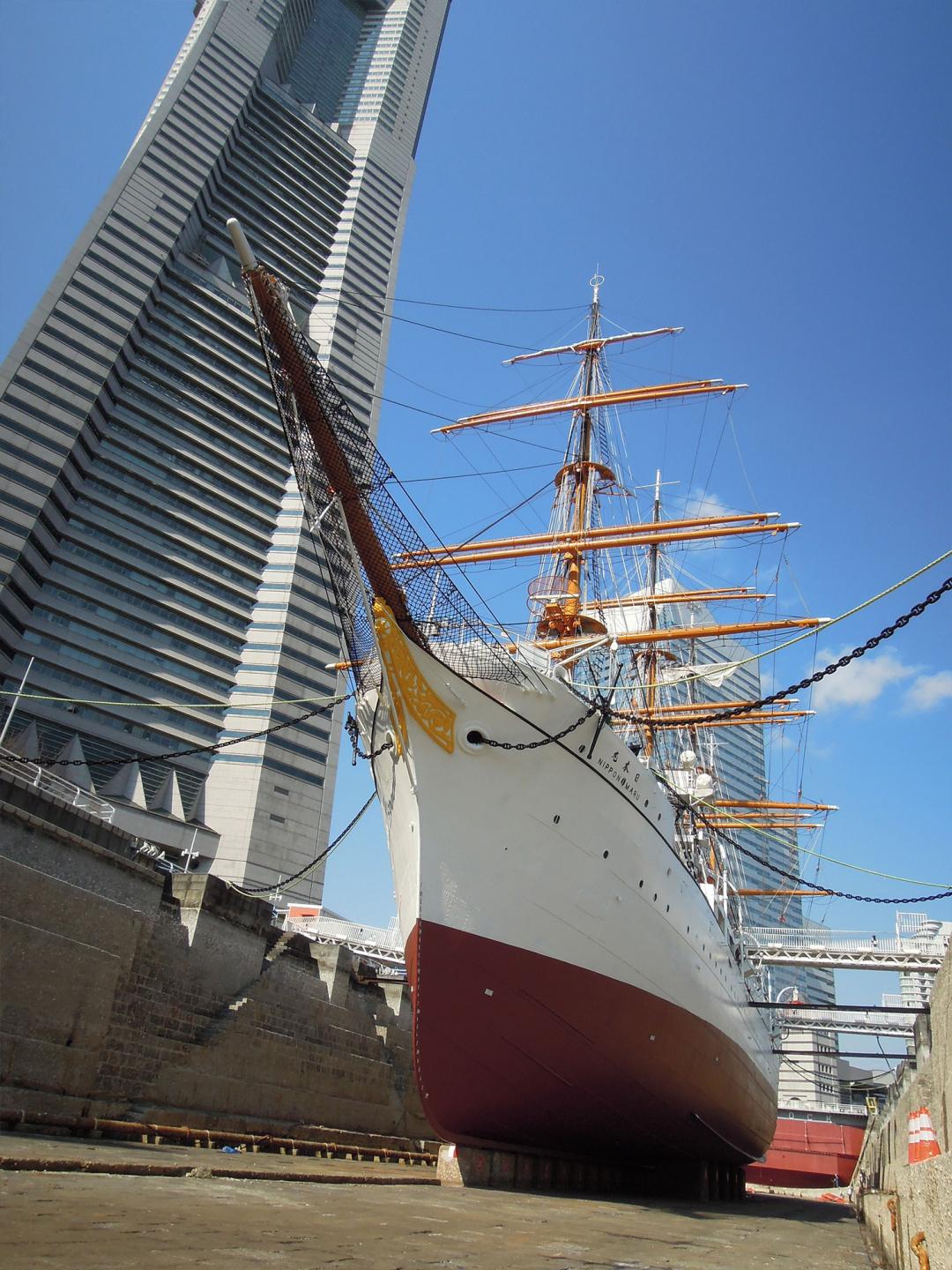The Ship That Trained a Half-Century of Sailors
With the opening of Japan’s ports and the advent of international trade, a demand emerged for sailors and officers to crew the mercantile ships that would cross the sea to trade with other countries. Nautical colleges were opened throughout Japan. Sailing ships were considered the best vessels for exposing trainees to the often severe conditions of life aboard a ship, and instilling in them the alertness, decisiveness, assertiveness, practicality, endurance, and sense of camaraderie that comes with being a sailor. However, with the exception of two government-operated schools in Tokyo and Kobe, none of these colleges had access to large-scale training vessels. Instead, training operations at the local colleges were carried out with smaller, wooden fishing ships or cargo ships. Consequently, accidents and injuries were common. A series of mishaps culminated in the tragedy of the Kirishima Maru, a training vessel that capsized in 1927, resulting in the deaths of 53 crewmen and students.
In response to the tragedy, the government commissioned two top-of-the-line four-masted barque-rigged training ships outfitted with diesel engines: the Nippon Maru and her sister ship, the Kaiwo Maru (currently on display in Imizu, Toyama Prefecture). Construction of the Nippon Maru was entrusted to the Kawasaki Shipyard, but few Japanese shipbuilding agencies had the necessary experience to produce the sails and rigging, and these aspects were ultimately subcontracted to a British firm. The engines, however, were produced domestically by the Ikegai Iron Works. The engines made for the Nippon Maru were cutting-edge pieces of technology. Steamships were still predominant at the time, and the first diesel-engine-powered vessel had been built less than a decade earlier. Although it was an expensive addition, the engines ensured the safety of the ship and its crew when navigating tight waterways, when the sails had to be furled, or when a lack of wind would leave a sailing ship adrift.

The Nippon Maru is launched at the Kawasaki Shipyard (1930)
(Image courtesy of Yokohama Port Museum)
The newly created Nippon Maru was used for training operations in and around the Pacific Ocean up until the beginning of Japan’s involvement in World War II. The ship’s sails, yards, and rigging were removed, and it was converted to a barge for hauling coal and bringing troops back from foreign countries. Once the war was over, the old sails were restored, and the ship was returned to service as a four-masted training vessel. Starting in the postwar period, the Nippon Maru began representing Japan in diplomatic journeys to far-off destinations, such as Los Angeles and New York.
The Nippon Maru was ultimately in service for more than 40 years—a testament to the fine craftsmanship involved in her construction—but by the 1970s, the ship was beginning to show signs of wear. When it was announced that the Nippon Maru would be replaced, Yokohama moved fast to secure the right to conserve and display the retired vessel. The city collected the signatures of 830,000 residents who wanted the original Nippon Maru preserved at its decades-long port of call. The ship was officially retired in 1984, and it was opened to the public the following year. In 2017, the ship was nationally designated Important Cultural Property in recognition of its many years of service.

The Nippon Maru with all sails set.
Though the sails are usually kept furled, the Nippon Maru is regularly exhibited at "full sail" throughout the year.
Dock No. 1
Today, the Nippon Maru is moored here at Yokohama Dock Company Ltd.’s No. 1 Dock. Between the mid-nineteenth and late-twentieth centuries, when Yokohama was a hub of international trade, this drydock and others like it were used for repairing and maintaining the ever-increasing number of ships that visited the port. This dock was one of two built at the end of the nineteenth century. Nearly a century later, the dock was made into the permanent home of the Nippon Maru. In recognition of its century of history, in 2000 the drydock was designated Important Cultural Property of Japan. In 2018, the drydock was drained, and repairs were made to the ship’s hull.

In 2018, the No. 1 Dock was drained in order to carry out repairs on the hull of the Nippon Maru.
Click here for more information about the Nippon Maru >
 Find and scan all the QRT codes!
Find and scan all the QRT codes!
(7different codes across 12 locations)

 A History of Yokohama Port
A History of Yokohama Port
 Zou-no-hana: The Birthplace of Yokohama Port
Zou-no-hana: The Birthplace of Yokohama Port

 Red Brick Warehouses: A Symbol of the Evolving Port
Red Brick Warehouses: A Symbol of the Evolving Port
 Shinkō Pier and the Hammerhead
Shinkō Pier and the Hammerhead

 Kishamichi Promenade
Kishamichi Promenade
 A Designer Cityscape: The Minato Mirai 21 Project
A Designer Cityscape: The Minato Mirai 21 Project
 The Ship That Trained a Half-Century of Sailors
The Ship That Trained a Half-Century of Sailors

 A History of Yokohama Port
A History of Yokohama Port
Click here for more information on the Port History Guide and other tourist information.
Cruise Project Promotion Division, Port and Harbor Bureau, City of Yokohama
Tel:045-671-7272
